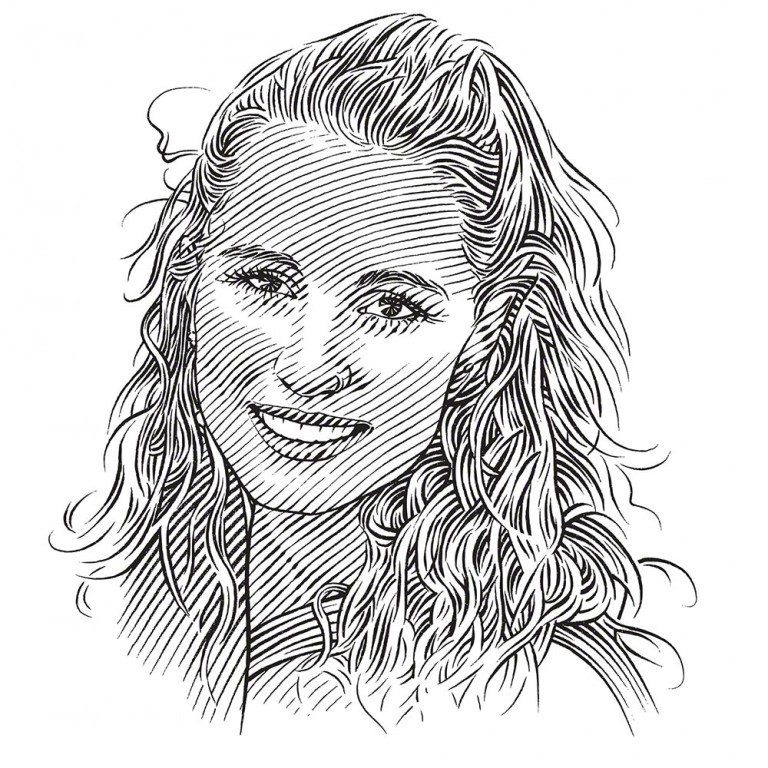Going with the tides
Tides exert a strong force on life at St Joseph Atoll, driving the movements and behaviour of its marine and terrestrial creatures. Ornella Weideli tells us how she’s exploring the effect of the tides on the atoll’s sharks.
Photo by Ryan Daly
One of the first interesting facts that staff at the Save Our Seas Foundation D’Arros Research Centre told me about the adjacent St Joseph Atoll was that the whole atoll ecosystem is immensely affected by the continuous change of the tides. Before working at St Joseph, the study site for my PhD project, I didn’t quite understand the full meaning of what they were saying. But now I’ve spent four months on the remote atoll, catching juvenile blacktip reef sharks Carcharhinus melanopterus and sicklefin lemon sharks Negaprion acutidens for my project, and I not only understand what they meant, but have even learned to use the changing tides in my favour.
St Joseph Atoll is subject to the patterns of a mixed semi-diurnal tidal cycle, which means that the magnitude of the high and low tides differs throughout the month, depending on the lunar cycle. Extreme high and low tides, called spring tides, occur around full and new moon, while moderate tides, called neap tides, occur around half moon. Therefore the appearance of St Joseph Atoll changes completely from one extreme to the other within a single month. At spring low tide, large sections of the reef flats are exposed to the heat of the day and transform into a hot, desert-like habitat. At spring high tide, the atoll fills completely with water and nearly disappears into the surrounding ocean. Also, the lagoon’s colour changes with the large amount of water that enters from the surrounding ocean, transforming from bluish turquoise to a much darker greenish colour.
Animals that live at St Joseph Atoll have adapted to these extreme changes in their environment by using different feeding strategies and foraging grounds at different tidal stages. At low tide, while my field team and I are struggling to drag our kayaks through the atoll’s shallow waters, we suddenly see seabirds all around us. They are feeding on worms and other creatures hidden in the freshly exposed and still-wet sand flats. However on an incoming spring high tide, the inflowing water quickly fills this exact same place and transforms it into a feeding ground for predatory fish and adult and sub-adult reef sharks. This hectic aggregation of foraging fish quickly turns the water into a murky soup to the extent that we are unable to see the substrate below us.
SOSF D’Arros Research Centre
A biological field station based on D’Arros Island in the Amirantes Group, Seychelles, the SOSF D’Arros Research Centre (SOSF–DRC) conducts research on the pristine D’Arros Island and St Joseph Atoll and the waters around them. In recognition of the islands’ outstanding natural values, the research centre was established in 2004 and tasked with becoming a regional centre of excellence for marine and tropical island conservation. Initially, collaborations were established with local and international institutions and baseline ecological surveys were conducted in the various habitats. Over the ensuing years an increasing number of research projects and monitoring programmes were implemented in response to questions raised by the baseline surveys and by visiting scientists. More recently, the centre expanded its activities to include ecosystem restoration and environmental education.
Today the SOSF–DRC boasts the longest-running nesting turtle monitoring programme in the Amirantes and the most detailed and technically advanced coral reef monitoring programme in the Seychelles, making use of techniques such as stereo-video photogrammetry, photoquadrats, remote underwater video systems (BRUVs) and visual census. The research centre also maintains the largest acoustic receiver array in the Seychelles, which monitors the local movements of sharks, manta rays, stingrays, turtles and fish. Since its inception in 2004, the centre has initiated no fewer than 36 research projects in collaboration with more than 26 conservation institutions. The projects have resulted in 10 peer-reviewed scientific papers, one PhD and one MSc dissertation, five conference presentations and 27 scientific reports.
